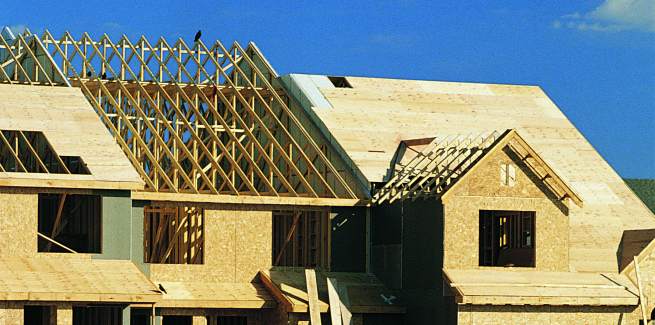The Australian Bureau of Statistics’ (ABS) building approvals figures for February 2021 have revealed that the number of dwellings approved have recovered from a 19.4 per cent decline in January to rise by 21.6 per cent in February (seasonally adjusted terms).
Approvals of detached dwellings, or private sector houses, reached a new record high of 13,939 houses, representing a 15.1 per cent rise in February, according to the ABS.
According to ABS director of construction statistics Bill Becker, detached dwelling approvals have exceeded the previous record high set in December 2020.
He also said that since the introduction of the federal government’s HomeBuilder scheme in June 2020, private house approvals have surged by almost 70 per cent.
Approvals for private sector dwellings excluding houses increased by 45.3 per cent in February 2021 to 5,082, but has remained 28.7 per cent lower than February 2020, the ABS figures showed.
Across the states, total dwelling approvals rose in Queensland (40.5 per cent), Tasmania (31.6 per cent), Victoria (21.7 per cent), Western Australia (19.1 per cent), and NSW (16.1 per cent), but fell in South Australia (3.4 per cent).
Approvals for private sector houses rose across all mainland states in February, including Queensland (25.4 per cent), Western Australia (16.7 per cent), NSW (14.5 per cent), Victoria (11.1 per cent) and South Australia (4.0 per cent).
The value of new residential building rose by 22.8 per cent to around $6.2 billion in February, while alterations and additions to residential buildings rose by 11.1 per cent to $973.2 million. The value of total residential building rose by 21.0 per cent to around $7.1 billion.
The value of non-residential building approvals rose by 27.5 per cent to around $4.1 billion (the highest level in four months) while the value of total building approved rose by 23.3 per cent to around $11.3 billion (in seasonally adjusted terms), according to the ABS data.
Home building to ‘absorb’ jobs in 2021 and 2022
Commenting on the approvals figures, Housing Industry Association (HIA) chief economist Tim Reardon noted that detached building approvals reached their highest level on record in February since the ABS began the series in 1983.
“HomeBuilder has driven strong demand for new homes across the country,” Mr Reardon said.
He added that the three months to February was also a record period “by a significant period”.
His analysis of data showed that detached house approvals in the three months to February 2021 were 50.7 per cent higher than the same time last year.
HIA’s analysis of the ABS data showed that in seasonally adjusted terms, the number of detached dwelling approvals during the three months to February 2021 compared to the same time last year were highest in Western Australia (138.6 per cent) followed by South Australia (67.7 per cent), Queensland (51.0 per cent), NSW (32.0 per cent) and Victoria (28.4 per cent).
In original terms, they improved in the Northern Territory (86.1 per cent), Tasmania (69.9 per cent) and the ACT (57.0 per cent).
“This is consistent with the results in more timely leading indicators such as HIA’s New Home Sales Report. This has shown an elevated level of demand following the announcement of HomeBuilder in June 2020,” Mr Reardon said.
“New home sales spiked in December as home buyers rushed to meet the deadline of the first phase of HomeBuilder. New home sales in March are expected to be comparable to those in December 2020 as home buyers rush to meet the deadline for the second – and final – phase of HomeBuilder.”
Mr Reardon also said that the “record” volume of work would lead to home building absorbing workers from across the economy in 2021 and into 2022.
COVID-19 crisis dents multi-unit dwelling starts
However, he said that the multi-unit sector has not mirrored the positive outlook for detached home building, and added that the lack of overseas migrants and students due to the international border closures amid the coronavirus pandemic would “continue to impede multi-commencements”.
According to HIA’s analysis of the data, multi-unit approvals have declined by 21.6 per cent compared with the same quarter last year.
Mr Reardon concluded: “Multi-unit projects that are gaining approval at this time are likely to have commenced the planning and building approval process before the pandemic.
“The apartment market is likely to be constrained until overseas migration returns.”
Assistant Treasurer Michael Sukkar noted the increase in approvals as the HomeBuilder program draws to a close, adding that Treasury has estimated that the scheme will support up to $18 billion worth of residential construction projects.
Commenting on the HomeBuilder scheme, Mr Sukkar said: "HomeBuilder has delivered effective support and stimulus to protect the jobs of the 1 million Australians employed in the construction sector.
"HomeBuilder is supporting our economic comeback and will continue to support residential construction jobs well into 2022."
[Related: Eyes on financial stability risk as house prices rise]
 ;
;
